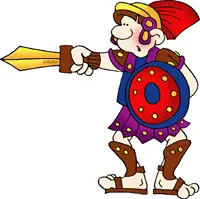Etruscan Art
The Etruscan civilization was instrumental in providing the world beautiful pieces of art work. The art work crafted by the Etruscans includes paintings, sculptures, mirrors, jewelry, and pottery.
Since the Etruscans traded regularly with the ancient Greeks, the art work resembled the art work in ancient Greece. Over time, the Etruscans created their own style of art work based on their culture and religious beliefs.
The culture of Etruscans helped develop ancient Rome art and architecture. Ancient Rome mixed many of the new ideas and forms of art work created by the Etruscans into their own art work.
Who were the Etruscans?
The Etruscans lived in ancient Italy from 800 B.C.E. until 100 B.C.E. when they were incorporated into ancient Rome. There were three main areas where the Etruscans lived which included Etruria, Latinum, and the Po Valley.
These areas were similar to ancient Greek city-states and often fought with each other or formed alliances against one another. There were several Etruscan kings who ruled ancient Rome including the last king of Rome named Tarquin the Proud.
As ancient Rome became more powerful the Etruscans became weaker. In the end, the Etruscans had a big impact on the development of ancient Rome.
Etruscan Paintings
Etruscan paintings were colorful and full of life. They showed scenes of parties, banquets, ceremonies, hunting, sporting events, important leaders, and mythological figures or gods.
Some of the best examples of Etruscan painting are found in ancient tombs. The paint used by the Etruscans was made of plants and organic matter.
Etruscan Bronze Mirrors
Etruscan bronze mirrors were a form of status symbol for wealthy Etruscan women and men. Most often the mirrors were given to women as gifts during marriage. The bronze mirrors were quite unique.
The design included a single handle and a highly polished side for reflection. Some Etruscan mirrors had a hinge and a cover plate that would open which helped reflect more light.
The back side of the mirror was either plain or contained various designs and decorations that were carved into the bronze. The handle was either painted or carved with designs and decorations.
Etruscan Pottery
Etruscan pottery was very similar to pottery in ancient Greece. Early pottery of the Etruscans was fired at low temperatures because of the remaining impurities in the clay they used. This type of pottery was called impasto. The pottery was painted with simple designs or scenes usually with red paint.
Eventually impasto was replaced with a more refined type of pottery called bucchero. This pottery was largely turned on potter wheels and after firing would have a glossy dark grey to black finish.
Bucchero pottery was decorated with simple lines, geometric designs, and some contained three dimensional figures like animals and humans.
The Etruscans also perfected terracotta as a form of pottery. Terracotta was widely used on buildings for roof decorations from life-size sculptures of animals and people to natural scenes with plants and mythological figures.
Terracotta plaques were also created and attached to buildings and walls. Terracotta was used for funerals too. The Etruscans made coffins out of terracotta and then decorated the outside with figures of the dead and other designs.
Etruscan Sculptures
The Etruscans were masterful at making bronze and metal sculptures. The Etruscans had access to large amounts of natural resources like copper, lead, silver, iron, and gold. Bronze sculptures include small figurines and large life-size figures.
Many of the larger bronze sculptures were destroyed by the conquering Romans. The Romans then melted down the bronze sculptures to make coins or other items. The bronze was cast using molds or a wax technique.
Sculptures were then engraved and embossed in specialty workshops that were located around Etruscan towns.
Legacy of Etruscan art
The legacy of Etruscan art work is seen around the world. They were not afraid of incorporating foreign ideas into their art work.
The art work of the Etruscans was influenced by Greece, Egypt, Phoenicia, and other countries around the Mediterranean region. Their art work was closely tied to their religion especially their beliefs of afterlife.
In addition to their art work of painting, pottery, mirrors, and sculptures, the Etruscans were masters of making jewelry and engraving gemstones with techniques still used today.
Facts about Etruscan art
- The Etruscans lived in ancient Italy from 800 B.C.E. until 100 B.C.E. when they were eventually integrated into ancient Roman society.
- Etruscans were the largest importer of ancient Greek pottery.
- We have learned much about Etruscan art from ancient tombs.
- There were several Etruscan kings that ruled ancient Rome including Tarquin the Proud, the last king of ancient Rome.
- Bronze mirrors were a status symbol for wealthy men and women. They were finely polished for reflection side and engraved with designs on the non-reflective side.
- Terracotta was used to make sculptures and plaques that adorned buildings and walls.
- Etruscan bronze sculptures were highly valued. Many small figurines have been found in tombs while the larger sculptures where melted down by the ancient Romans and turned into coins.
- Etruscan art contained elements of design from around the known world including Greece, Egypt, Phoenicia, and the Mediterranean region.
What did you learn?
- What color was bucchero pottery?
Glossy dark grey and black
- What were terracotta sculptures and wall plaques used for in Etruscan art?
Building decorations
- What material did the Etruscans mainly use for sculptures?
Bronze
- What Etruscan art item was seen as a status symbol?
Bronze mirrors
- What materials were used to make paint?
Plants and other organic materials



